The story of the Zuccardi - Valle de Uco winery is focused on two aspects: a place and the people who live and work here. This is already hinted by the name: Zuccardi is the family name (three generations of wine producers, originally from Campania) and Valle de Uco is the wine region where this family makes wine. This is confirmed by Sebastián Zuccardi during our visit: “El vino es lugar y gente” he says multiple times.
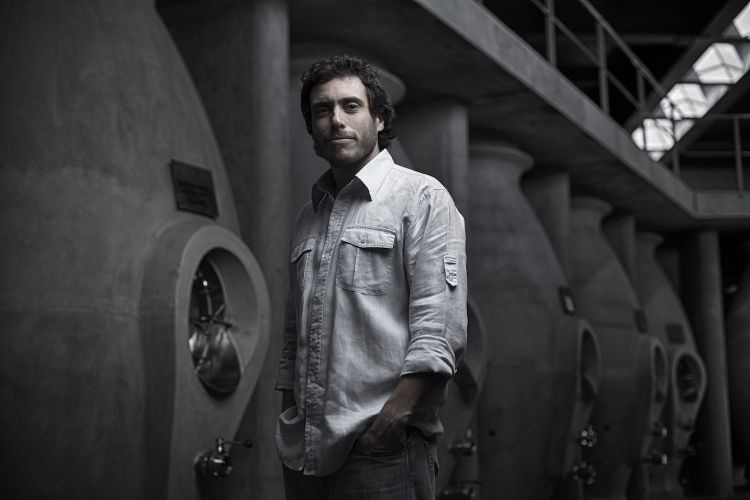
Sebastián Zuccardi and the cement tanks designed by himself. It took him six years of work and research with his team of agronomists to design these tanks, under the Zuccardi patent
It’s a good one and a half hour’s drive from Mendoza to Valle de Uco: the winery is over 100 km south of the city, basically at the foot of the Andes, which stand out in the background. It’s a very young site, opened only in 2016, even though the Zuccardis have been making wine since the Sixties, in a winery now called Santa Julia, right outside Mendoza. Oenologist Sebastián Zuccardi, 39, third generation of vintners, bet on this young wine region – the first vineyards were planted in the Nineties – and started to explore it in 2000: «I realised the place had a different identity – he told us – even though until then I still didn’t fully understand the full potential of this region. My knowledge was empirical: I knew the high quality of the grapes grown here».
Set between rivers Tunuyàn and Las Tunas, Valle di Uco formed gradually with the sediments of the flooded rivers which, over thousands of years, left in the valley huge quantities of stones, rocks, debris, creating a very heterogenous soil, and rich in limestone. A dry and semi desertic climate – the heat is made milder by the breeze from the Andes - with only 200 mm of rain each year and 360 days of sun, temperature excursions that range, depending on the area, between 10 and 30°C.
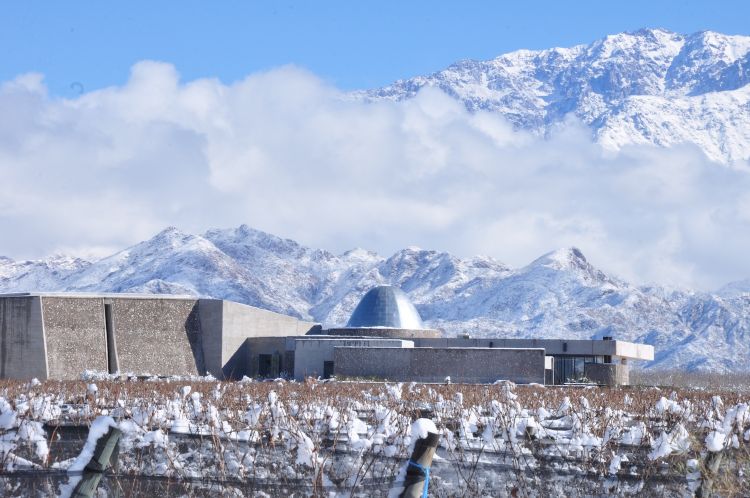
Zuccardi - Valle de Uco in the winter
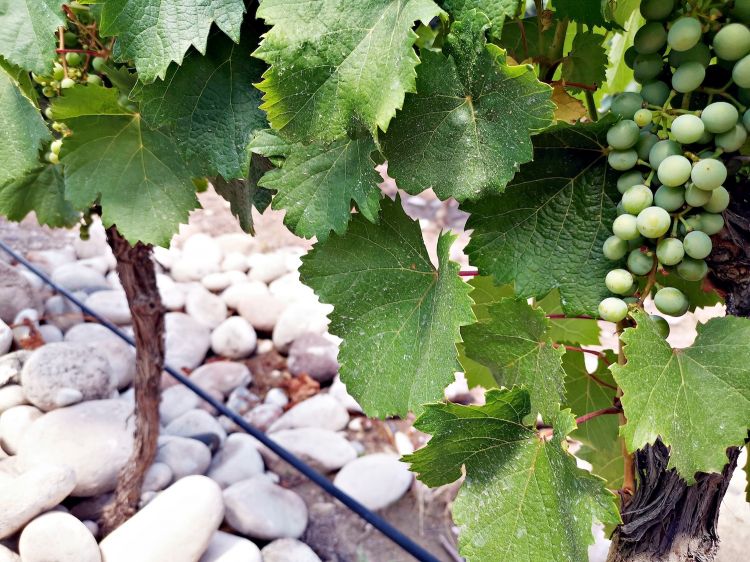
Malbec in the Piedra Infinita estate
Here, in 2002,
Sebastián starts to look for vineyards and buy grapes. In 2009 he buys a first plot: he’ll call the estate
Piedra Infinita, and this is where the cellar is now. On that first plot, at 1,100 metres above the sea level, he decides to grow Malbec, the variety that according to
Sebastiàn, best represents this region, in terms of history and adaptability. But before he can do so, he must remove the rocks covering it: over one thousand trucks (1080, to be precise) covered with stones left this estate so they could plant a vineyard. An endless area of rocks and stones that until that time represented a sort of frontier for local farmers: impossible to grow something on that expanse of stone.
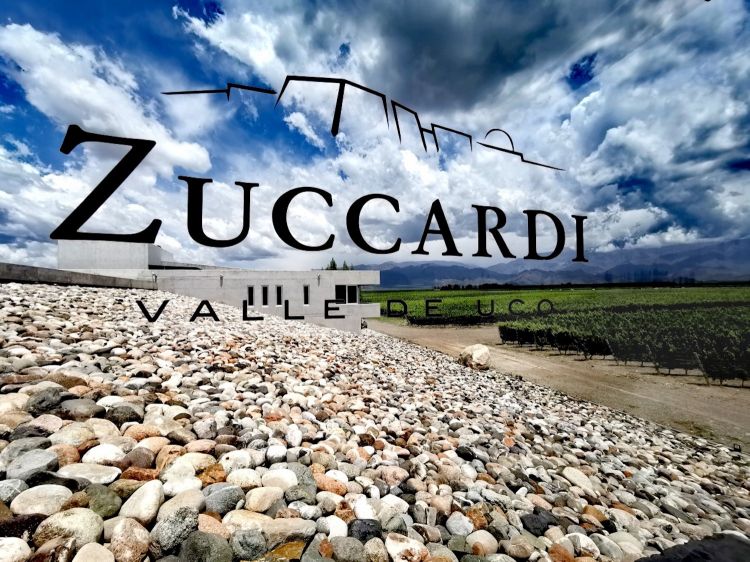
Zuccardi - Valle de Uco. They had to remove over one thousand trucks full of stones to plant the first vineyard at the Piedra Infinita estate
An incredible quantity of stones that the oenologist found on that land, together with the verses written, back in 1932, by Mendoza-born poet Jorge Enrique Ramponi in his poem Piedra Infinida (which Sebastián rediscovered at that time), gave the name to that estate. A name that was also a tribute to the place and to the local culture. The verses of Piedra Infinita, Ramponi’s poem, are now carved into the walls of the winery: «They speak of the Andes – says Sebastián – just like our wines do, which are mountain wines: their identity is given by the Andes».
On this plot, the estate (finca in Spanish) Piedra Infinita, in 2013, the Zuccardis start to build the new winery which was opened – after years of plans, research and works – in 2016. After only three vintages, Zuccardi - Valle de Uco was nominated best winery in the world according to The World’s 50 Best Vineyards 2019.
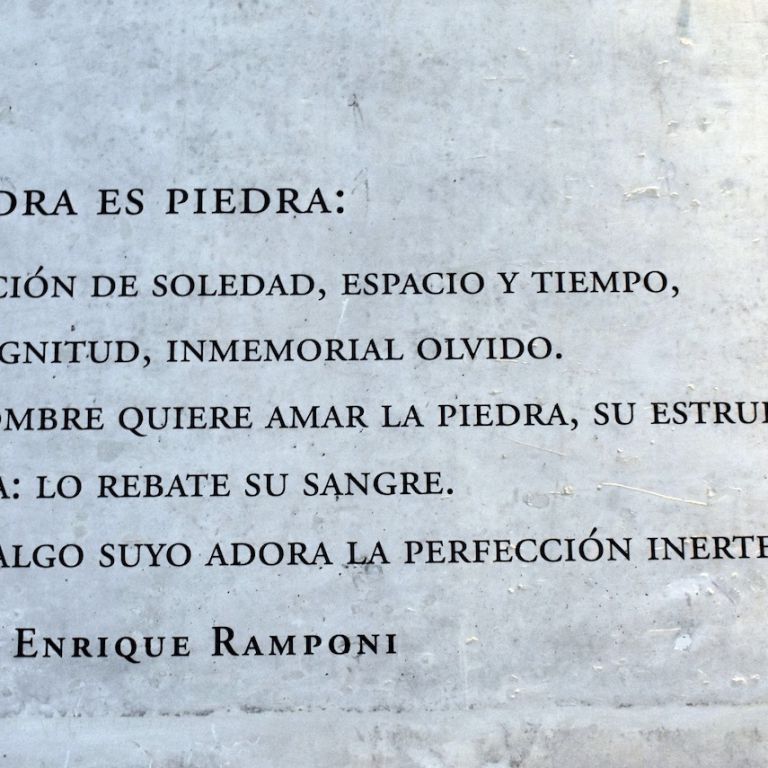
"Piedra es piedra:/ aleación de soledad, espacio y tiempo, / ya magnitud, inmemorial olvido. / El hombre quiere amar la piedra, / su estruendo de piel áspera: lo rebate su sangre. / Pero algo suyo adora la perfección inerte.". Verses from Piedra Infinita by Jorge Enrique Ramponi, carved into the wall of the winery.

Zuccardi - Valle de Uco. Just like the name of the place is part of that of the winery, so the latter’s architecture is part of the surrounding landscape, in a sharing that won’t leave you indifferent
A masterpiece from architect Fernando Raganato from Mendoza, the winery was conceived together with Sebastiàn and the Zuccardis, taking into account both the function of the building, and the desire to build something that would be in harmony with the surrounding landscape.
Defined as a “supernatural” beauty by magazine Great Wine Capitals (which in 2017 awarded it with the gold medal for its design, in the “Best of… Architecture and Landscapes”category) the building is a monument built by the Zuccardis, a tribute to the Andes: «From the beginning we wanted the building not to be in competition with the place, but to become a part of it and a tribute to the Andes in the background», Sebastiàn explains.
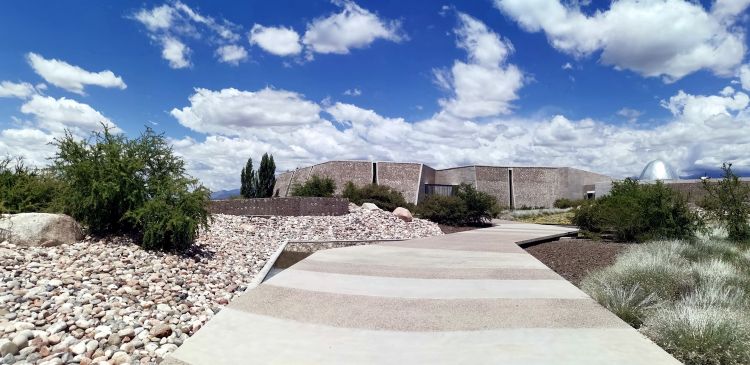
Welcome to Zuccardi - Valle de Uco. The architecture of the winery, a tribute to the Andes, was awarded a gold medal by Great Wine Capitals in 2017
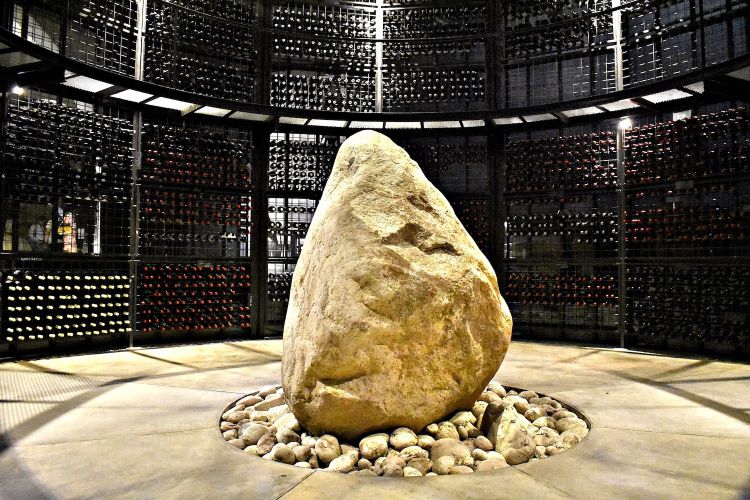
The huge stone, left where it was found, around which the room for the bottle refining was built
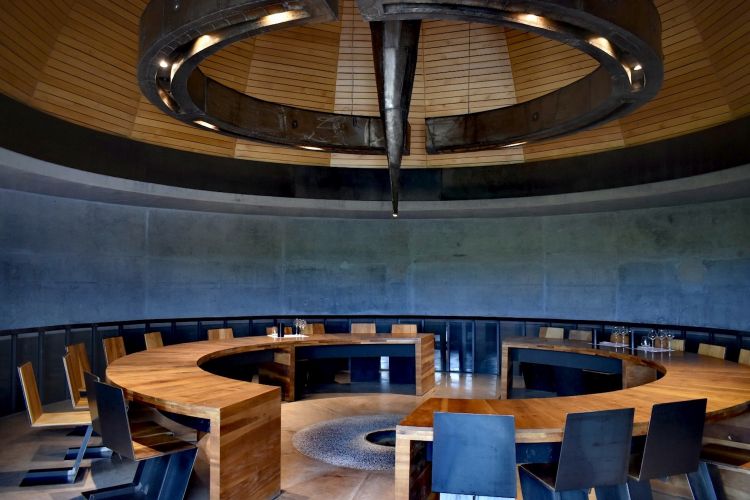
Guillermo Rigattieri, artist from Mendoza, designed this installation decorating one of the two tasting rooms, placed on top of the room where the wine refines in bottle. A seed, on top of a dome, represents the grape variety, through which a ray of artificial light passes, through a hole in the floor, and lights up the huge stone below. The region is lit up – interpreted and represented – thanks to the grape variety

The entrance to Zuccardi, by local artist Roberto Rosas
So the irregular and sloping walls of the winery, built with stones (the famous 1000 trucks!), sand and water from the Valley, represent the silhouette of the majestic mountains on the horizon; the zigzagging path along which you arrive at the entrance, recalls the winding path of the rivers Tunuyán and Las Tunas, which enclose the Valley. The cone-shaped water basins recall the alluvial flans in the Valle de Uco; the surrounding vegetation is the native one of Mendoza, while the steel dome reflecting the sun and the sky represents the light that shines over this place 360 days a year, natural light that seeps wisely through the windows inside the building.
Inside the winery one can also get a sense of the Andes and the territory, through the materials that Sebastiàn chose to make its wines: cement. Naked cement – not turned into glass, and thus with a better porosity – built local stones, sand, water from the estate. The technical choice is also based on the culture and the history of the region and of the people who first started making wines here: «There’s nothing new in what we’re doing – Sebastián explains – In the Thirties, Italian immigrants used cement tanks when making wine; even my grandfather initially used cement. This is a choice of going back to the origins, but also back to the future, with a greater awareness which can also be seen in the choice of building cement tanks using only local raw materials, to create an even deeper connection between the region and the wine making areas».
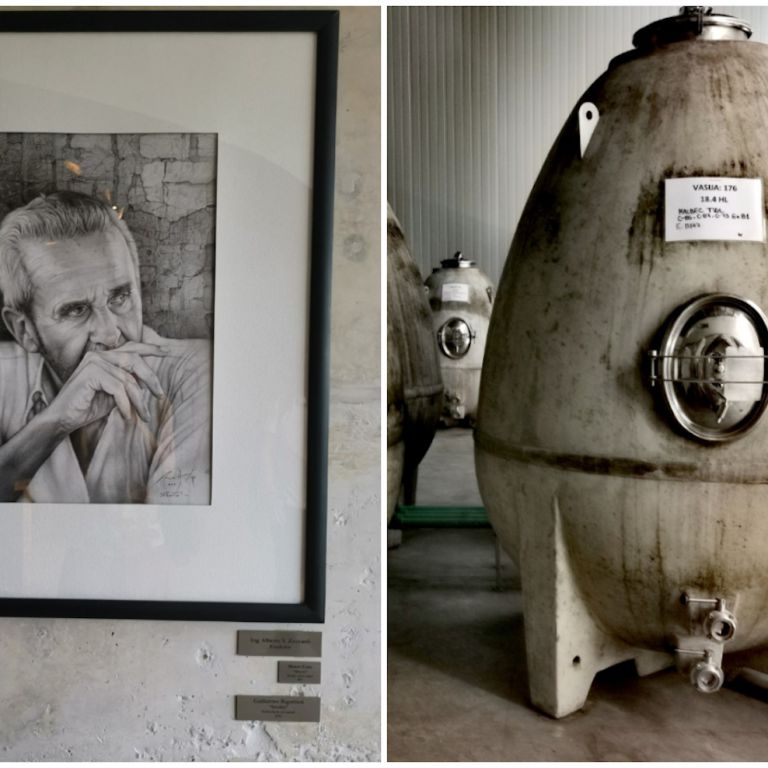
Alberto "Tito" Zuccardi, grandfather of Sebastián, originally from Avellino. In 1963 he planted the first vineyards in Maipù (Mendoza). To the right, cement eggs at Zuccardi - Valle de Uco.
Maceration, fermentation, ageing: the entire process takes place in cement tanks, and only sometimes, and partially, there’s a use of French, Austrian or German oak, never toasted so as not to cover the personality of these wines, oozing the region where they were made. «The Andes give our wines their identity. The protagonist and the future of Argentinian wine-making is the place», Sebastián always repeats (in words but also through coherent choices of style and production).
To express the region, however, one needs a grape variety. In this case Malbec: «Malbec has adapted so much to this territory that I believe we can say that here in Mendoza with this variety we have what happens with Pinot Noir in Burgundy, or Nebbiolo in Barolo, Sangiovese in Tuscany: the variety becomes transparent to its elective territory, allowing to express its every nuance».
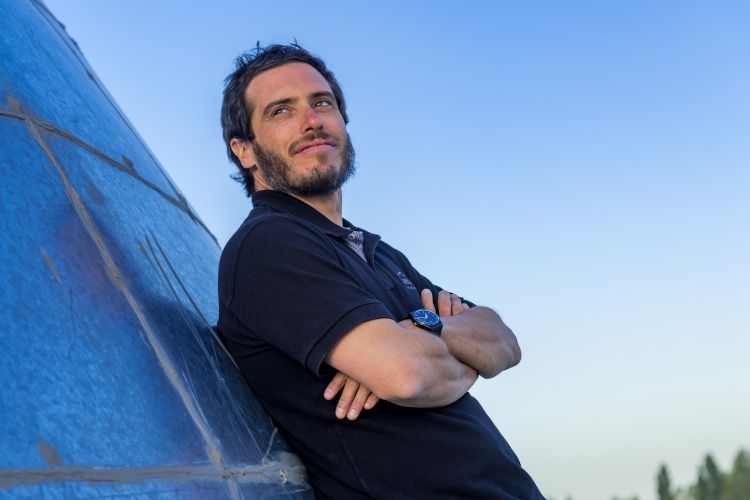
After graduating in Agricultural studies from the Facultad de Ciencias Agrarias UNCuyo in Mendoza (a crucial choice, compared to studying oenology, because «wines are made in the vineyard»), Sebastián Zuccardi starts to train for 7 years in different wineries around the world: Spain, Italy, Portugal, France, United States, Chile to open his mind, learn, share and understand what he wanted to do in his country. During this period he realises that the future is in the location: «Burgundy, Barolo, Tuscany: the grape variety is not important per se, but as a means to express the region»
And the Valle de Uco offers endless nuances: on top of the different altitudes at which the vineyards are located (between 950 and 1600 metres), on top of the different microclimates due to the altitude and the closer or further presence of the Andes, what changes this place into something unique and impressive is the range of soil – from limestone to gravel, from sedimentary to silty. This led the team of agronomists who work with
Sebastián to divide the different estates into plots depending on the type of soil and its geomorphological features, so that the vineyards are divided into many irregular shapes: 40 only at finca
Piedra Infinita. Over one hundred in the six estates owned.

Left: nobody had every farmed this land. In the past, stones represented a frontier for local farmers. In the Pietra Infinita estate Malbec Piedra Infinitais born. Right, the 2016 vintage received 100 points from Robert Parker - The Wine Advocate. Fermentation in cement tanks with indigenous yeasts. Ageing in cement and French oak barriques
This potential allows
Sebastián to create wines with a unique identity that can tell a story,
Zuccardi hopes. Three stories in particular. The first, is the story of the region where they are produced, the landscape, climate, and soil; a unique combination. Then the wines should illustrate
the philosophy of the
Zuccardis: a family originally from Campania that has been living and working in Mendoza for three generations, with an approach based on respecting the region and the identity. Finally, the
story of the vintage: «Every vintage is different –
Sebastián points out – If we put together the territory, the people who live and work here – who change, we never remain the same, season after season – and the year of production, you can have unique wines». Products of the meeting of all that is mentioned above, but also interpreted by the personality, vision and talent of
Sebastián Zuccardi.

To the left, Aluvional 2015. Malbec grapes from the vineyards in the alluvial flan closer to the Andes, characterised by very large stones covered in limestone. A marvellous representation of the territory, the supremacy of the terroir over the grape variety, also shown through the choice, for some wines, of not stating the grape variety on the label, but just the name of the estate – in this case Paraje Altamira – or the type of soil - "Aluvional"

Chardonnay Q 2018 ("Q" stands for quality). Altitude of 1200-1400 mt. Fermentation in cement with indigenous yeasts. Refining on the lees in barriques and cement amphoras. Very elegant
There are special vintages, in which all the stars and the planet align, in which all the pieces of the puzzle – the place, the oenologist, the vintage, the climate, the moment of the harvest, the wine making process, the choices in the cellar – match perfectly and give life to a masterpiece. This is what happens in the interpretation of the young Argentinian oenologist for the Malbec produced at finca Piedra Infinita in 2016, consecrated in 2019 - A Good Year! - with 100 points from Robert Parker.
Luis Gutiérrez, a The Wine Advocate taster for Argentina, explained the points by stating that the work of Zuccardi in 2016 reached “a stratospheric perfection. The symmetry and elegance of this vintage –Gutiérrez wrote – is truly fascinating, everything seems to be in the right place. There’s a fantastic harmony, the nose is clean and pure». Malbec Piedra Infinita 2016, according to Gutiérrez, «combines power and elegance and energy. I believe it’s the best that Zuccardi has produced until now. This is why he deserved a three-digit result».
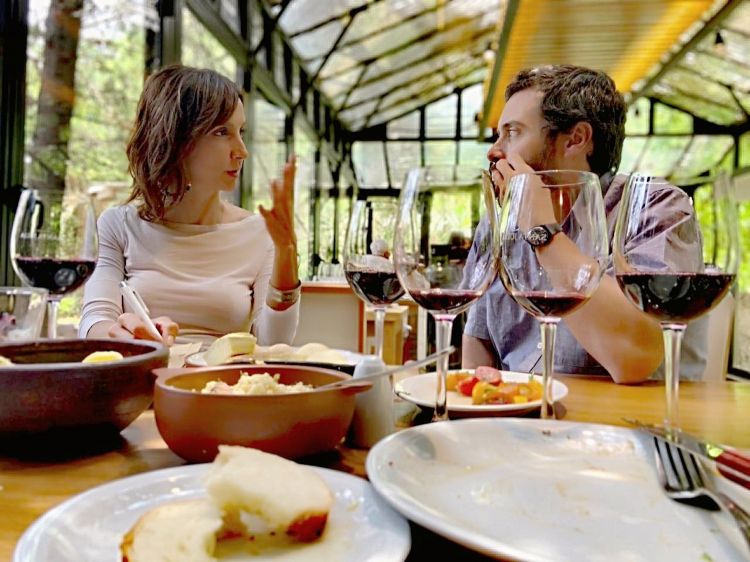
Our Giovanna Abrami and Sebastián Zuccardi
“They say – Sebastiàn says in the introduction to the new edition of the poem Piedra Infinita, which he decided to publish – that poets do not invent poems, but that these already exist, and poets just discover them. Wine, in the same way, is born from the vineyard but is the genuine expression of this place. Our task is to intervene as little as possible so that the grapes can fully express themselves. The wine is a blast of the identity of all that blends in its creation: climate, soil, region, people».
El vino es lugar y gente.
Translated into English by Slawka G. scarso